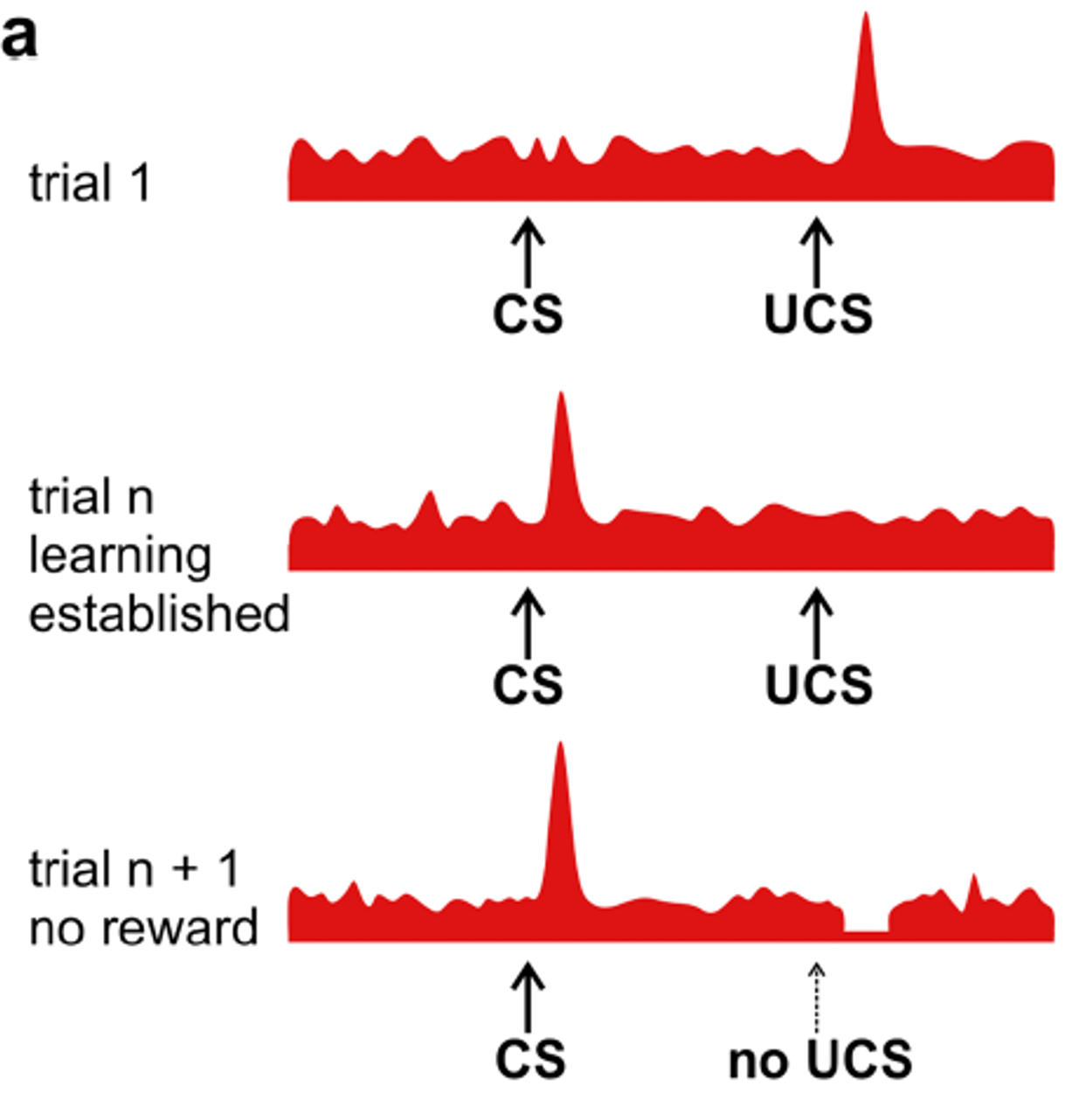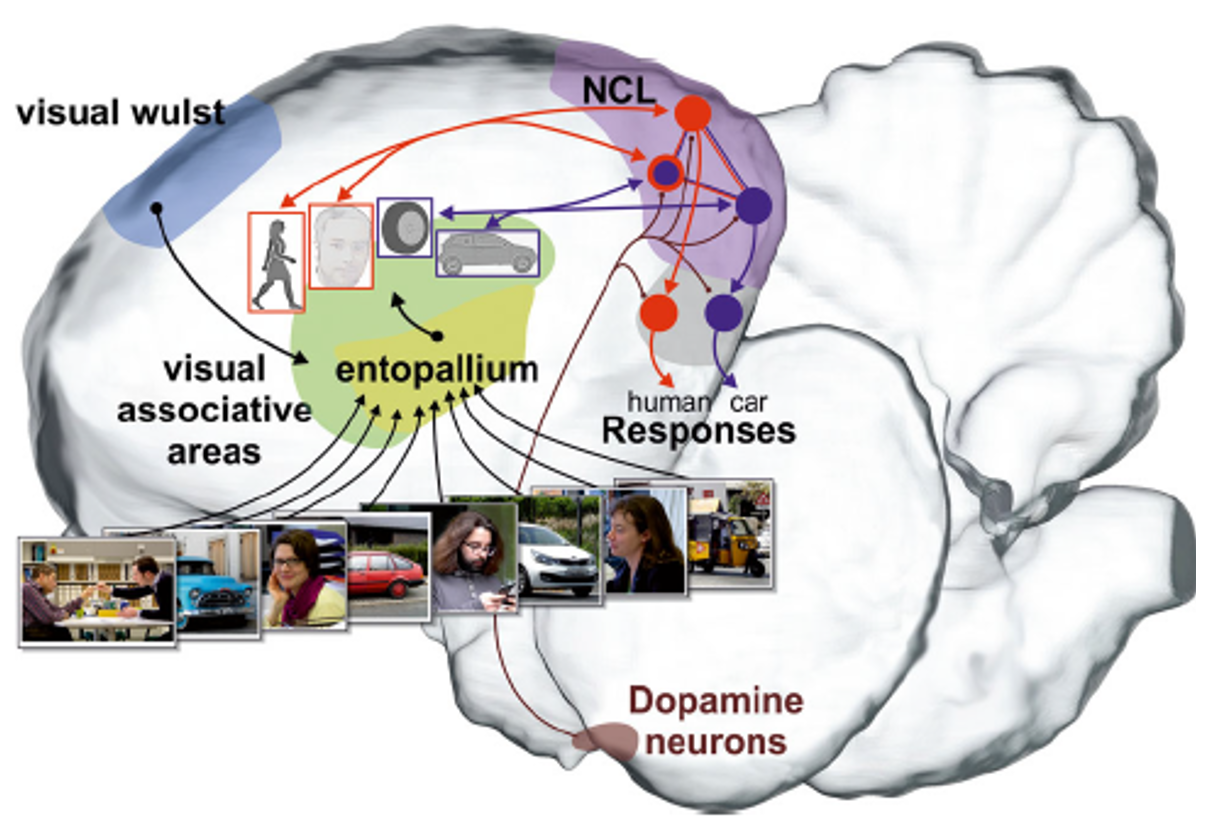Suppose I were to show you three different objects – a Jeep, Honda, and Ferrari. You could quickly name their shared category as “car”. Pigeons, honeybees, dogs, rats, and a variety of primates can answer that question just as fast as a human, after sufficient experience. Even more impressive is that all of these species can recognize tens of thousands of objects from almost any angle or perspective in milliseconds.
Being able to group objects with similar perceptual characteristics, like color, general shape, or sound, into one entity is the process of categorization. Take the cars above: each one is made up of four round things that touch the ground (tires), is bigger than a person, has a rectangular shape (more or less), and moves independently of other objects. These characteristics are first perceived by the relevant sensory system and then assimilated into the category of “car” after some experience.
In contrast, when one considers the features of cars that are more abstract and not based on perception, such as cars carry people from point A to point B and are found on a road, these elements share functions and form the “concept” of a car.
Onur Güntürkün, Charlotte Koenen, Fabrizio Iovine, Alexis Garland, and Roland Pusch of Ruhr-Universität Bochum recently published a novel explanation about perceptual categorization in pigeons in the Psychonomic Society’s journal Learning and Behavior. The article is highlighted in this post. Taking a conceptual approach, Güntürkün and colleagues reviewed a number of neuroscience findings from pigeons and primates and integrated the two topics together in an attempt to develop a mechanistic explanation of perceptual categorization by pigeons.
Going to the birds
Since the early 1960s, the categorization abilities of laboratory-raised pigeons have been assessed in the laboratory. What began with testing the pigeons’ ability to differentiate humans from non-human images progressed to identifying characteristics of cars (inductively), to human facial expressions and movements, to different painting styles. This research has used a consistent methodology to test categorizations developed by Herrnstein and his colleagues.
This method included large numbers of training stimuli followed by a transfer task in which novel stimuli were used. To control for possible learning rules such as “people in pictures are also associated with certain perceptual features like trees and houses”, a number of control procedures were implemented. Examples included putting images of humans on constant backgrounds, modifying images of humans by removing various body parts like their heads or arms, and measuring the location of pecks. Despite these modifications, the pigeons were able to reliably categorize the stimuli (except for headless humans, like the headless horseman and Ichabod Crane in Disney’s Legends of Sleepy Hollow).
So how are the birds doing this?
Although we don’t know the answer just yet, we have some glimpses into the possible mechanisms at a neurological level.
Expectation is everything
After reviewing the literature involving expectation formation, learning, and the dopamine reward pathway, Güntürkün and colleagues proposed that the mechanistic hypothesis involving these three components may be a good explanation when combined with the neurobiological evidence discussed in their paper and below. The predicted relationship between these three constructs is depicted in the figure below.

When an individual is first exposed to a neutral stimulus (CS, like a blue cup) followed by an unconditioned stimulus (UCS, like a tasty grape), dopamine (a pleasure-inducing chemical in the brain called a neurotransmitter) is released immediately following the experience of the grape (the red spike in trial 1). The individual had no expectation for the grape because the blue cup was meaningless for the first experience.
After the grape follows the blue cup several more times, the individual eventually learns to “expect” the grape with the appearance of the blue cup. As seen in the second line of the figure, “trial n learning established,” the dopamine is released (red spike) after the blue cup is seen (CS) instead of after the grape is experienced (UCS). The “expectation” of the grape as marked by the blue cup is predicted to be linked to a release/increase in dopamine.
Sometimes, the grape doesn’t follow the blue cup, which produces a mismatch between the expectation and reality. In this case, as seen in the third row of the figure above, the blue cup is still expected to produce a dopamine increase (the red spike at the CS) but when the grape does not follow, the expectation was violated. Thus, dopamine is actually inhibited or negatively signaled (the loss of dopamine activation as indicated by the reduction or break between the red at the no UCS in the figure).
This sequence of predictions is called the dopamine-mediated reward prediction error hypothesis and was proposed by Schultz (1998). The hypothesis has received support from a wide variety of neurological studies of the reward processing system in the brain.
Training the brain
Learning to categorize stimuli into the same category requires a number of repetitions. Through trial and error, individuals begin to learn what the key stimulus features are that help an object be identified as a car (round things under a rectangle) or a cup (a vertical line with a hole in the middle). Although vision is not the only sensory system used during categorization, it is the one we have researched the most.
Primates have a certain area in the brain called the inferior temporal cortex (ITC) that responds differentially to elements within a visual stimulus. Over time, specific patterns of activation emerge as the neurons respond differentially to specific stimulus features and configurations through repeated exposures.
The formation of categories activates a second area of the primate brain – the prefrontal cortex (PFC). This area seems to be involved in forming boundaries between categories (like discriminating between dogs and cats) and is utilized to discriminate between different categories of stimuli. Like the ITC, neural evidence for these processes has been recorded in monkeys.
In a nutshell, the ITC breaks a stimulus down into its elements and approaches categorization from the bottom (i.e., the elements) and the PFC utilizes previous existing knowledge (i.e., top-down processing) to influence what elements are important in categorizing the stimulus swiftly.
Bird brains?
As it turns out, the pigeon brain (and that of other avians) is organized functionally much like the mammalian brain, arguably a case of convergent evolution in which the same function has emerged in two disparate species. Namely, the nidopallium caudolaterale (NCL) of the pigeon brain (purple area in figure below) seems to function much like the PFC in mammalian brains – it encodes possible future events and expectations based on learned stimulus associations and is heavily innervated with fibers that are filled with dopamine receptors.

Birds and the bees?
Although an invertebrate with a very different brain structure, bees also create categories like birds and primates. Güntürkün and his colleagues suggest that the convergence of neural evidence from bird visual processing and mammals, especially primates, neural activity patterns suggests that perceptual categorization (at least in pigeons) appears to be mediated by a reward pathway and the formation of expectations during the acquisition of associations. In particular, while one part of the brain is processing the elements of a stimulus, the other part of the brain is matching those patterns of activation to pre-existing patterns and if the pattern matches to an expected outcome, dopamine is released. If it doesn’t match, then the brain “re-tunes” the existing rule and activation. I am curious as to whether a similar pathway exists for bees or did another convergent mechanism evolve for solving the categorization problem.
An integrated world?
Whatever the mechanism may ultimately turn out to be, this novel approach of combining typically unconnected areas of research to develop a mechanistic explanation of a robust phenomenon, perceptual categorization, is an excellent model for other fields. As I learned recently at the latest meeting for the International Society of Comparative Psychology, architects can learn from biologists who can learn from anthropologists, and together they may address social issues, such as obesity. For example, healthy lifestyles can be promoted by using prominently placed but easy-to-use stairs – a series of flat lines that are raised in a vertical manner, which the pigeons would no doubt be able to categorize.
Psychonomics article focused on in this post:
Güntürkün, O., Koenen, C., Iovine, F., Garland, A., & Pusch, R. (2018). The neuroscience of perceptual categorization in pigeons: A mechanistic hypothesis. Learning & Behavior, 1-13. DOI: 10.3758/s13420-018-0321-6.
